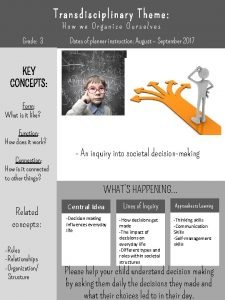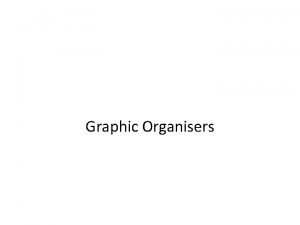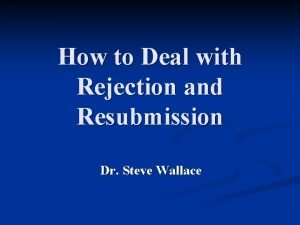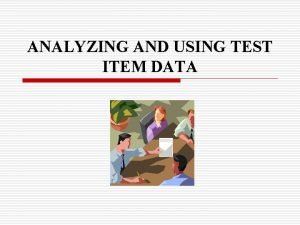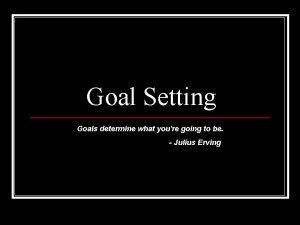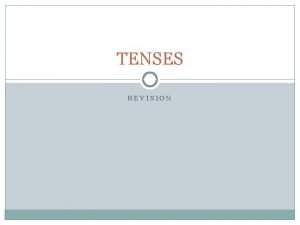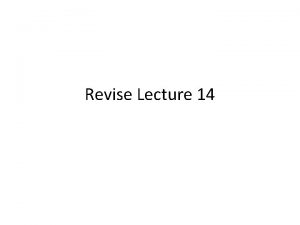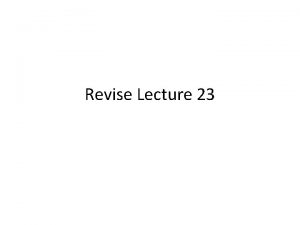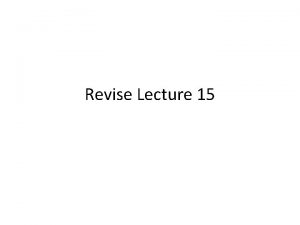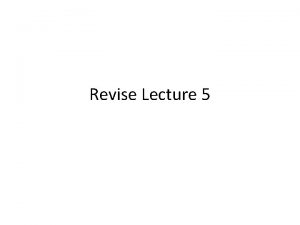Organise revise and complete the systemic conceptual model














- Slides: 14

Organise, revise and complete the systemic conceptual model © Pierre Ibisch 2014 Phase II Systemic risk and vulnerability analysis Step 8

Credits and conditions of use © Centre for Econics and Ecosystem Management, 2014 The Centre for Econics and Ecosystem Management strongly recommends that this presentation is given by experts familiar with the adaptive management process in general (especially as designed as the Conservation Measures Partnership’s Open Standards for the Practice of Conservation) as well as the MARISCO Method itself. You are free to share this presentation and adapt it for your use under the following conditions: • You must attribute the work in the manner specified by the authors (but not in any way that suggests that they endorse you or your use of the work). • You may not use this work for commercial purposes. • If you alter, transform, or build upon this work, you must remove the Centre for Econics and Ecosystem Management logo, and you may distribute the resulting work only under the same or similar conditions to this one. This material was created under the leadership and responsibility of Prof. Dr. Pierre Ibisch and Dr. Peter Hobson, codirectors of the Centre for Econics and Ecosystem Management, which was jointly established by Eberswalde University for Sustainable Development and Writtle College. Compare: Ibisch, P. L. & P. R. Hobson (eds. ) (2014): The MARISCO method: Adaptive MAnagement of vulnerability and RISk at COnservation sites. A guidebook for risk-robust, adaptive, and ecosystem-based conservation of biodiversity. Centre for Econics and Ecosystem Management, Eberswalde (ISBN 978 -3 -00 -043244 -6). 195 pp. - The Powerpoint Presentation was conceived by Christina Lehmann and Pierre Ibisch. Authors of graphs and photographs are indicated on the corresponding slides. Supported by the Deutsche Gesellschaft für Internationale Zusammenarbeit (GIZ) Gmb. H on behalf of the Bundesministerium für wirtschaftliche Zusammenarbeit und Entwicklung (BMZ). 2 8. Organise, revise and complete the systemic conceptual model

3 8. Organise, revise and complete the systemic conceptual model

Learning objectives Participants are able to critically review the conceptual model and to facilitate the process of grouping threats and contributing factors into appropriate thematic domains like spatial governance-related, institutional and socio-cultural factors. They have a clear understanding and the ability to explain the use of this step to get a clearer overview of the domains containing the main factors and to achieve a more structured model as a basis for the development of strategies. Participants have a strong understanding that the logical cause-effect chains still be clearly visible after grouping. 4 8. Organise, revise and complete the systemic conceptual model

Outline What does organising, revising and completing the systemic conceptual model mean? ? Why organising, revising and completing the systemic conceptual model? How is the systemic conceptual model organised, revised and completed? Practical Tips 5 8. Organise, revise and complete the systemic conceptual model

What does organising, revising and completing the systemic conceptual model mean? • Before: Intuitive, productive gathering and slight structuring of ideas, comments, information ? Threat concerning mining Governance-related contributing factor Socio-economic contributing factor Industrial contributing factor Spatial contributing factor Socio-economic contributing factor 6 Spatial contributing factor Institutional contributing factor Governance-related contributing factor Institutional contributing factor Threat concerning transportation Threat concerning pollution Institutional contributing factor Governance-related contributing factor Industrial contributing factor Socio-economic contributing factor Threat concerning transportation Threat concerning mining Threat concerning pollution Industrial contributing factor Threat concerning transportation 8. Organise, revise and complete the systemic conceptual model

What does organising, revising and completing the systemic conceptual model mean? • Now: Clear structuring and ordering of threats and contributing factors ? Institutional contributing factor Spatial contributing factor Institutional contributing factor Socio-economic contributing factor Governance-related contributing factor Threat concerning pollution Threat concerning transportation Industrial contributing factor 7 Threat concerning mining Threat concerning pollution Socio-economic contributing factor Threat concerning mining Threat concerning transportation 8. Organise, revise and complete the systemic conceptual model

Why organising, revising and completing the systemic conceptual model? • After preceding steps this is a good point to pause, review, and adjust • Let the model “communicate back” to participants ? ! ! ? ! © Pierre Ibisch 2011 8 8. Organise, revise and complete the systemic conceptual model

How is the systemic conceptual model organised, revised and completed? Contributing Factor Special A Contributing Factor General B Contributing Factor Special A Threat ? • Take time to create order in the model • Recognise hierarchical order as is present in most ecosystems • Apply reductionism – a few elements may belong together with just a slight difference that may be combined → that does not necessarily diminish complexity • Threats may be grouped according to the IUCN-CMP categories Contributing Factor Special B Contributing Factor General A Contributing Factor Special A 9 Threat Check out: Unified Classifications of Threats & Unified Classifications of Threats and Actions Contributing Factor General B Contributing Factor Special B 8. Organise, revise and complete the systemic conceptual model

How is the systemic conceptual model organised, revised and completed? ? • Grouping contributing factors according to thematic domains: – Biophysical factors – Socio-economic factors – Political factors – Institutional factors • Agree on fitting titles (e. g. , traffic infrastructure, criminality and corruption, governance, demography) © CEEM 2014 • If one group is not represented in model, critically reflect 10 8. Organise, revise and complete the systemic conceptual model

How is the systemic conceptual model organised, revised and completed? ? © CEEM 2014 11 8. Organise, revise and complete the systemic conceptual model

How is the systemic conceptual model organised, revised and completed? ? 12 • Factor chains can be moved around if necessary, but cause-effect logic is to be kept • Remove double factors • Include missing factors • Institutional domains need special attention: o Many of the factors affecting biodiversity are likely to relate back to the activities of the organisations employing the participants → show innocent contribution to vulnerability of biodiversity object o Consider institutional weaknesses (e. g. resource shortages, conflicts with other actors) that are to be treated as contributing factors to threats o Tools like SWOT analysis are recommended here in order to identify weaknesses etc. 8. Organise, revise and complete the systemic conceptual model

SWOT Analysis • Tool to identify the personal or business context, advantages and disadvantages • Considers: ? – Strengths Weaknesses Opportunities Threats - Things you are good at - Experience, knowledge - Unique characteristics – Weaknesses – Opportunities – Threats • Self-analysis in order to make decisions and act structured with determination - Strategic alliances, cooperations Creativity Enter new fields Reduce costs - Things you need to improve Gaps in skills and knowledge Financial issues Leadership and Management issues - Change in the environment - Missing resources - Lack of staff • Keep track of goal and possibilities to reach it 13 8. Organise, revise and complete the systemic conceptual model

Practical Tips ? 14 • Analyse current impacts of biophysical or natural factors on human activities, as well as resulting indirect changes Example: Climate change → conservation-relevant adaptation or mitigation measures in other sectors (biomass production for energetic use as driver for intensification of land-use and loss of diverse production systems) • Be courageous! Change categories of certain elements if the cause -effect-chain makes more sense through this • If you cannot manage to finish this step throughout the workshop, plan to do it in the evening by yourself 8. Organise, revise and complete the systemic conceptual model
 How we organize ourselves grade 4
How we organize ourselves grade 4 Visual organisers
Visual organisers Assure lesson plan
Assure lesson plan Decision letter sample
Decision letter sample Revise and resubmit letter example
Revise and resubmit letter example How to revise and remember
How to revise and remember Item with negative discriminating power must be retained
Item with negative discriminating power must be retained Tentative goal statement
Tentative goal statement Revise and editing
Revise and editing What is proofreading
What is proofreading Revision present simple or present continuous
Revision present simple or present continuous Remember in present simple
Remember in present simple How to revise for english literature gcse
How to revise for english literature gcse English literature paper 1 macbeth
English literature paper 1 macbeth Kuesioner terstruktur
Kuesioner terstruktur
